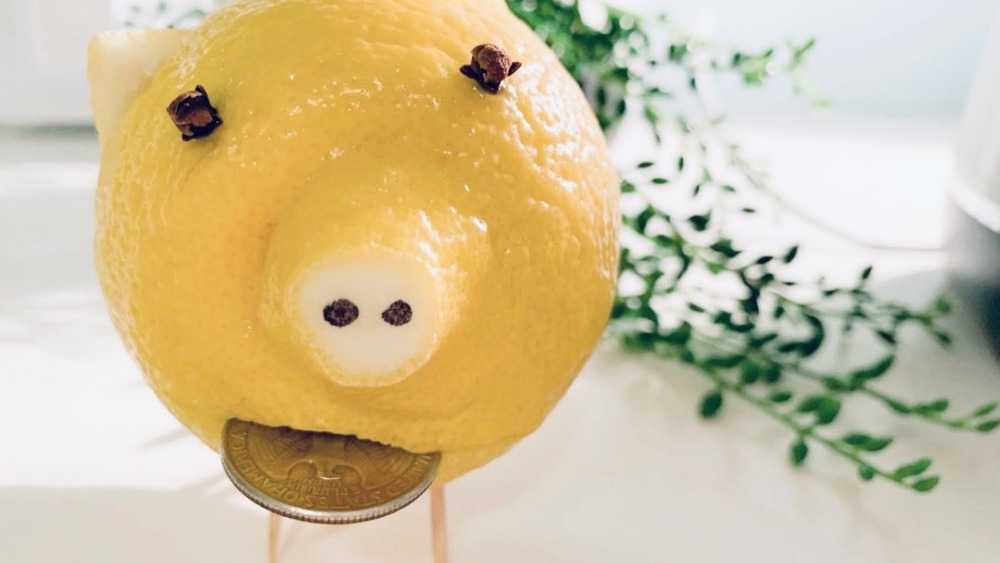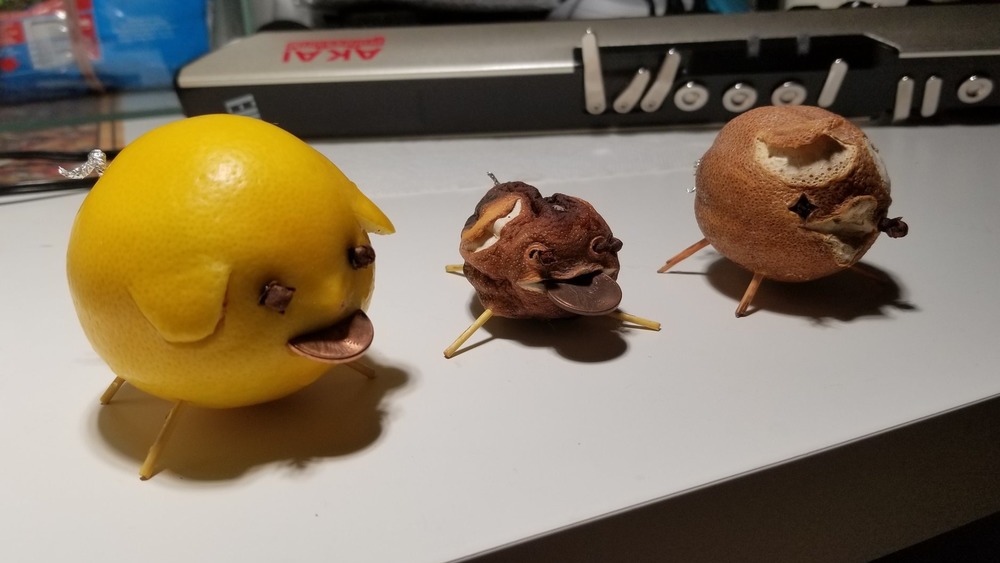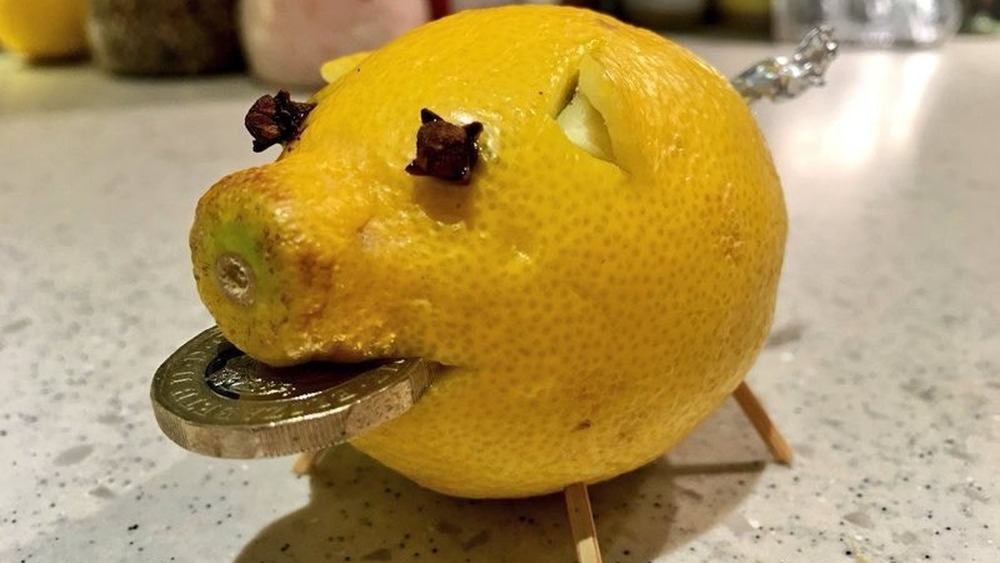The Strange Origin Of Lemon Pigs
There are plenty of well-known New Year's and New Year's Eve traditions that reportedly result in good luck. From eating 12 grapes to kissing a loved one at the stroke of midnight, eating black-eyed peas to smashing a plate, per Good Housekeeping. You may have even tried a few out yourself. However, there's one tradition that's been popping up on social media over the last few years that seems to be on the newer side — though its origins go way back.
Scroll through your social feeds on New Year's Eve and you may be treated to the sight of some either well-carved or quite ghastly lemon pigs. It's simply a lemon carved to resemble a pig, with a snout, ears, eyes, and a mouth holding a coin, as well as toothpick legs and a curly tail. Lemon pigs possibly made its first social media appearance in 2017, according to Atlas Obscura. On New Year's Eve night, author Anna Pallai, an expert in retro cuisine, tweeted a photo from a 1971 entertaining book that featured a lemon pig and claimed the pig would bring good luck. Followers jumped on the idea and, soon, lemon pigs ran rampant all over Twitter and Instagram.
But lemon pigs go back further than the 1970s
While Atlas Obscura reported it was the 1971 author of 401 Party and Holiday Ideas from Alcoa that came up with the brilliant idea of using a lemon pig as a New Year's Eve good luck charm — they weren't the one who came up with the concept entirely. Instead, Alcoa (an aluminum foil company) simply adopted the idea of a lemon pig for the holidays and made a slight adjustment to the lemon pig construction and added a curlicue aluminum foil tail.
The lemon pig goes back further than the 1970s, with mentions of lemon pigs showing up in magazines and other publications in the late 19th century. At that time, though, the lemon pigs were not used as a good luck charm or New Year's Eve decor; instead, they were considered easy and cheap crafts and toys for children. The good luck aspect wasn't ever connected to the pigs until that resourceful writer for Alcoa, needed yet another way to incorporate aluminum foil into the holidays and decided a lemon pig with an aluminum tail was as good a craft for thrifty housewives as any (via Atlas Obscura).
How to make your own New Year's Eve lemon pig
Regardless of the lemon pig's origins, there's no denying that its cute when done right, and at least entertaining and good for a laugh when done poorly. For those who want to make a lemon pig of their own this holiday, CNN breaks down the directions: Select a plump lemon. Using a knife, slit a mouth on one end for the penny. Above both sides of the mouth, shave two round ears into the rind. Jab two peppercorns or cloves into the rind above the mouth for the eyes. Stick four toothpicks into the bottom of the lemon body for legs. Twist aluminum foil into a curly tail and push it into the opposite end of the lemon. Add the penny to the pig's mouth and make your good luck wish.
Don't have a lemon on hand? You don't necessarily need a lemon in order to create your good luck charm. Creative folks have used a variety of other materials on Twitter, including limes, potatoes, pickles, oranges, and other fruits and veggies.


